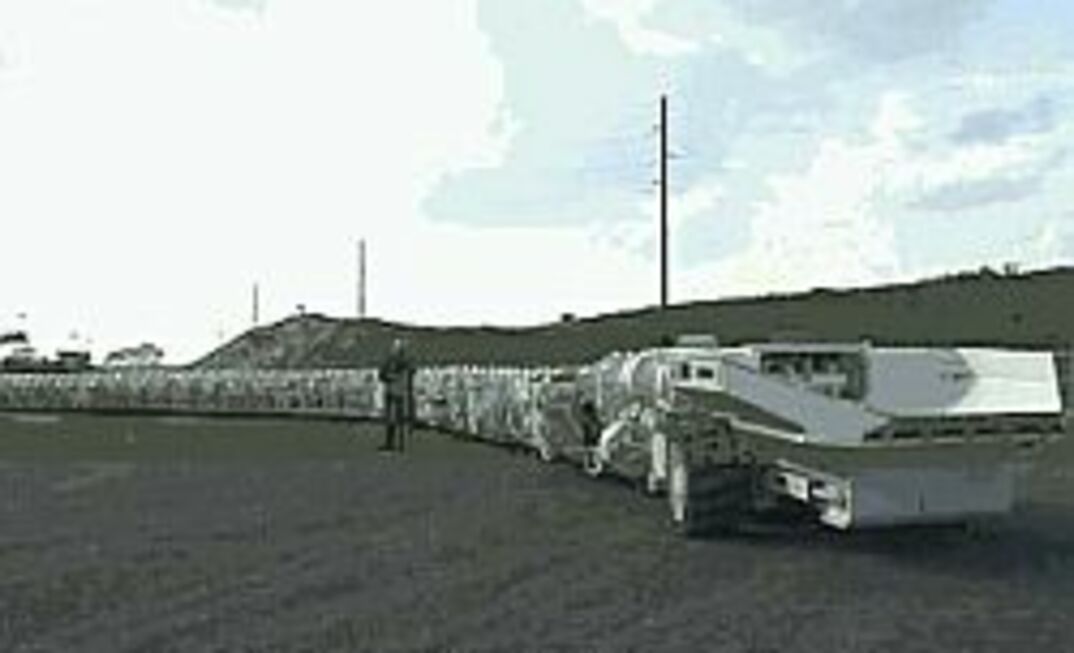Highland operates two Joy 4FCTs, the company’s latest generation in the train. The most recent model boasts 1000 volt Variable Frequency Drives (VFD), longwall AFC chain technology and utilisation of components from other Joy product lines.
Issues like belt edge wear, tractive effort, and cost of maintenance have been significantly improved upon with the 4FCT.
“This now makes the latest FCT the most unique and advanced method of making the continuous miner truly continuous,” Joy said.
The original FCT was conceived by former Joy president Bill Calder in an effort to make the continuous miner operation truly continuously. To do this he believed there needed to be a conveyor that would follow the miner and haul away all the miner would produce.
The project began in the mid-60’s using a corrugated belt made by BF Goodrich. The FCT contained this belt in a series of rubber tire supported belt cars that were pulled on both ends by a tire driven tractor with skid steering. The tractors, at each end of the FCT, were limited in tractive effort and getting around in poor bottom conditions was impossible. The belt had a very short edge wear life and would tear in half often.
Two of these systems were built and tested underground before this concept was abandoned. The concept proved to be a good one, but technology needed to be improved to make it economical to operate.
Joy was issued a government contract to pursue the basic concept of the FCT and with that, the 2FCT project was initiated. The 2FCT consisted of a monorail over the section’s panel belt with a bridge conveyor that would bridge the gap between where the 2FCT ran out of monorail and the back of the miner.
Special "monorail drives" were developed to move the 2FCT along the monorail and switches were used for making the machine turn corners. Several of the 2FCT’s were built and in service around the world including Australia, South Africa, and the U.S.
Belt wear was still a major issue and hanging monorail slowed the process too much for it to be economical.
The 3FCT was developed to contend with the monorail issue. The 3FCT developers returned the machine to the ground and used a full-length crawler to keep it mobile even in the worst mine conditions.
Several belts were developed to gain acceptable belt life and improve the machines overall height, carrying capacity and maintenance. Several 3FCT’s were built for both coal and trona mines, with some still operating today.
























